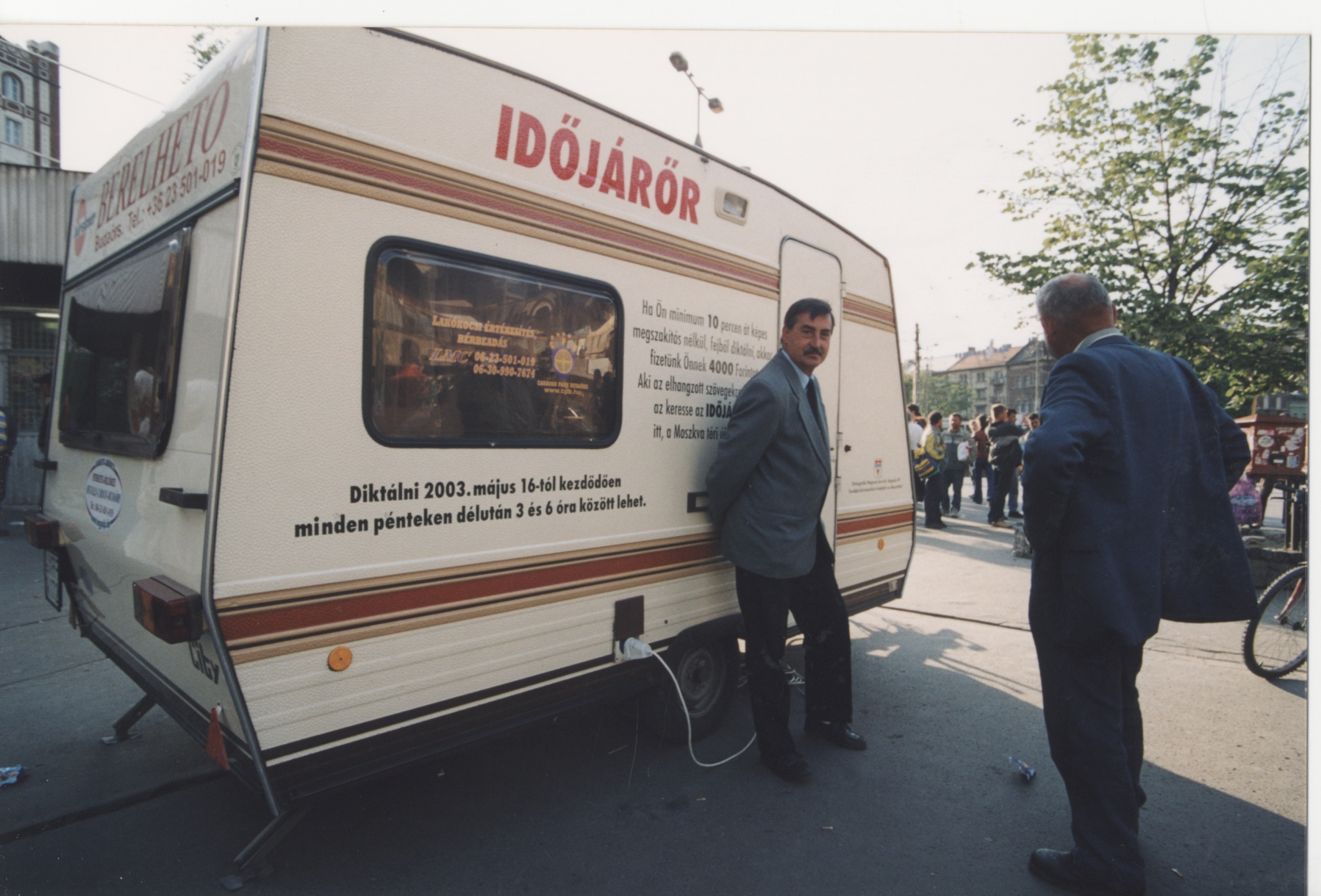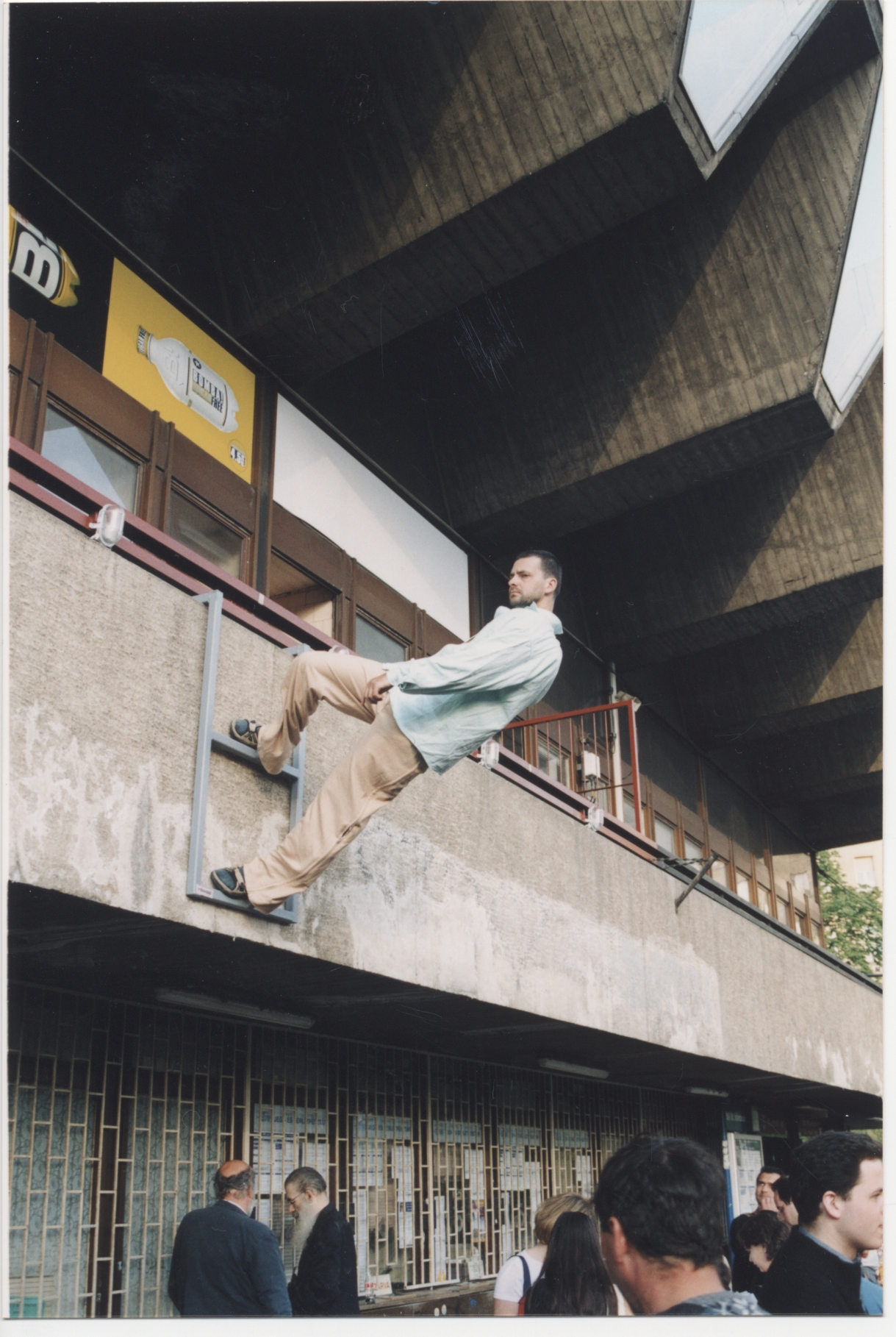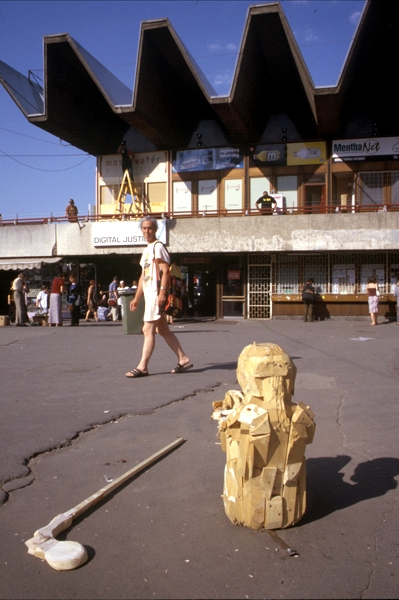The starting point of the project is ‘Moszkva tér’ [Moscow Square], a space taken in the metaphorical sense, yet it is a real square in the centre of Budapest. It blends different controversial aspects of a typical urban place. Moszkva tér is an important centre and intersection of public transport with an underground junction, bus and tram stops for the Buda side of the city. It is a well-known black labour market: people hang around in the early morning hours to find one-day work, many homeless people stand around all day. On the other side of the square, a big shopping mall-cum-recreation centre is located: a concentration of capital and a meeting place for the ‘nouveau riche’ from the Buda hills. Moszkva tér can be seen as a hybrid mental space in terms of its geographical role, its social aspects, and its mostly late modern architectural design. The Budapest City Municipality has been making plans for the regeneration of the square, which means that eventually this particular heritage of the Communist past will soon disappear. ‘Moszkva tér’ as a mental space symbolises our relationship with our visual history while it raises questions of public space in general. In other words, it serves as ideal platform to raise the issue of public art, its social, political, aesthetic, etc., aspects. The fundamental curatorial strategy takes the form of a dialogue. This is necessitated by the fact that art in the public space in the post-Communist countries was introduced to the audience only in the form of public monuments, whereas its international discourse focuses on issues such as communication between the local and the global, identity, multiculturalism, postcolonialism, etc. The project offers a meeting point so that a discursive space gets to be built, partly as the result of a workshop that took place in the Museum on November 23-24, 2002. The working process of the project is designed to operate on different levels. Four Hungarian artists (Róza El-Hassan, Little Warsaw, Tamás St.Auby, Balázs Beöthy), and four artists from abroad (Andreja Kuluncic /Croatia/, Bik van der Pol /Holland/, Stefan Keller /Switzerland/, Carey Young /Great Britain/) are invited not only to take part in the project as artists, but also as discussion partners. Seven participants are selected via an open competition: Ilona Németh (Dunaiska Streda, Slovakia), HINTS Institute for Public Art, Péter Szabó Péter and Csaba Csiki (Cluj, Romania), János Sugár, Sándor Bodó Nagy, Ágnes Eperjesi, Tibor Gyenis, Andreas Fogarasi, Sándor Bartha, bp. ‘Moszkva tér’ is part of the European Union’s Culture 2000 project.
If you want to learn more abouit this exhibition, click HERE.



